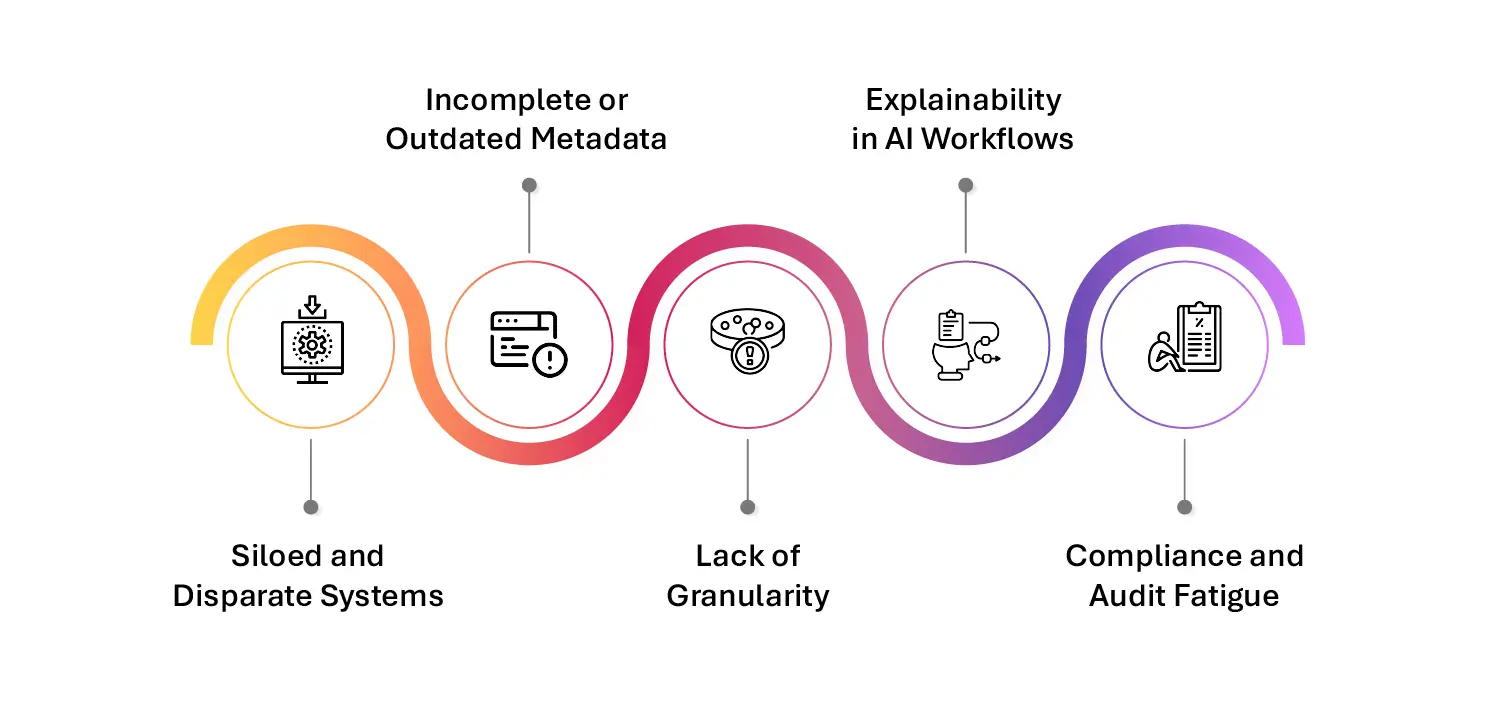Data lineage is the end-to-end record of a dataset’s origins, transformations, movements, and usage over time. It maps how data flows across systems—from source to storage to consumption—capturing each step in its lifecycle. Lineage provides critical transparency into where data comes from, how it has been altered, and where it ends up.
Why It Matters
Data is not static in today’s algorithmic enterprises—it moves, mutates, and multiplies. Without a clear understanding of these transformations, organizations face blind spots in compliance, AI explainability, and operational integrity. Data lineage eliminates that uncertainty. It enables businesses to trace errors back to their source, demonstrate regulatory accountability, and establish trust in their data-driven processes.
Lineage is particularly vital in regulated industries like healthcare, banking, and insurance, where a single incorrect transformation can lead to flawed decisions or non-compliance. It also underpins responsible AI, helping teams prove what data trained a model, how it was processed, and why the output is defensible.
Reimagining Data Lineage: The Backbone of Responsible AI, Regulatory Resilience, and Data-Driven Trust
In a landscape dominated by AI-powered decisions and regulatory scrutiny, data lineage has evolved from a backend IT function into a strategic necessity. It’s no longer just about tracking data movements—it’s about ensuring that every insight, every model, and every report is grounded in traceable truth.
As AI systems ingest, transform, and act on data at scale, lineage provides the explainability layer that separates trusted intelligence from black-box automation. It enables organizations to answer critical questions: Where did this data come from? Who touched it? What changed—and why? Without those answers, enterprises risk training models on biased data, failing compliance audits, or making high-stakes decisions on faulty assumptions.
Lineage also bridges the gap between compliance and agility. Whether responding to a Subject Access Request under GDPR or proving data integrity in a financial audit, lineage delivers real-time visibility and defensibility. It enables teams to operationalize data governance, automate reporting, and embed accountability directly into AI and analytics workflows.
Forward-thinking enterprises are reimagining data lineage not as a passive trail but as an active enabler of trust, transparency, and transformation. In an era defined by algorithmic risk and data sovereignty, lineage is the strategic infrastructure that keeps AI ethical, compliance credible, and insights actionable.
The New Frontier: Automated, AI-Powered Lineage at Scale
As enterprise data ecosystems expand across hybrid, multi-cloud environments, traditional lineage tools can no longer keep up with the volume, variety, and velocity of data. The future of data lineage lies in automation and intelligence systems that not only map data flows but also understand them in real time.
AI-powered lineage engines are beginning to detect anomalies, identify policy violations, and infer undocumented data relationships across complex pipelines. These tools are moving beyond static lineage diagrams to offer dynamic, contextual maps that continuously evolve as data moves, transforms, and interacts with business logic. By integrating with observability platforms, they allow operations, compliance, and security teams to respond instantly to lineage-related risks, whether it’s detecting shadow data, unapproved AI training sets, or unauthorized data movement.
Moreover, this shift empowers domain teams—not just IT—with visibility and control. Through federated governance models, business units can own their data flows, while central teams maintain oversight and consistency. This democratization of lineage is what will enable enterprises to scale responsibly, meet evolving regulatory expectations, and innovate without compromise.
Challenges in Data Lineage—and What to Do

Siloed and Disparate Systems
Data often travels through multiple platforms, applications, and business units, each with limited visibility.
What to Do: Implement a unified data catalog with automatic lineage tracking across hybrid and multi-cloud environments.
Incomplete or Outdated Metadata
Manual or static documentation can’t keep pace with dynamic data flows and real-time transformations.
What to Do: Use AI/ML-powered tools that continuously monitor, extract, and update metadata across your data ecosystem.
Lack of Granularity
Lineage records that stop at system-level mappings fail to capture field-level changes and business logic.
What to Do: Invest in fine-grained lineage that tracks data down to attribute-level transformations and user interactions.
Explainability in AI Workflows
When training data lacks traceability, it’s impossible to audit model decisions or identify root causes of bias.
What to Do: Embed lineage directly into your AI pipelines—from data ingestion to model inference—to ensure traceability and trust.
Compliance and Audit Fatigue
Meeting audit requests or data subject rights obligations is time-consuming without traceability.
What to Do: Automate lineage-driven reporting to demonstrate compliance with GDPR, HIPAA, DPDP, and other global laws.
Data lineage is more than metadata—it’s enterprise memory. It’s how organizations gain confidence in the data they rely on, and how they turn that confidence into action.
Whether it’s ensuring ethical AI, enabling zero-trust data architectures, or responding to evolving privacy mandates, data lineage provides the visibility and verifiability that today’s digital enterprises need to scale securely. As the complexity of data ecosystems grows, those who can trace, explain, and act on their data flows in real time will lead, not just in compliance, but in innovation.
Getting Started with Data Dynamics:
- Learn about Unstructured Data Management
- Schedule a demo with our team
- Read the latest blog: Does Data Localization Alone Guarantee Privacy? The Unspoken Challenges






